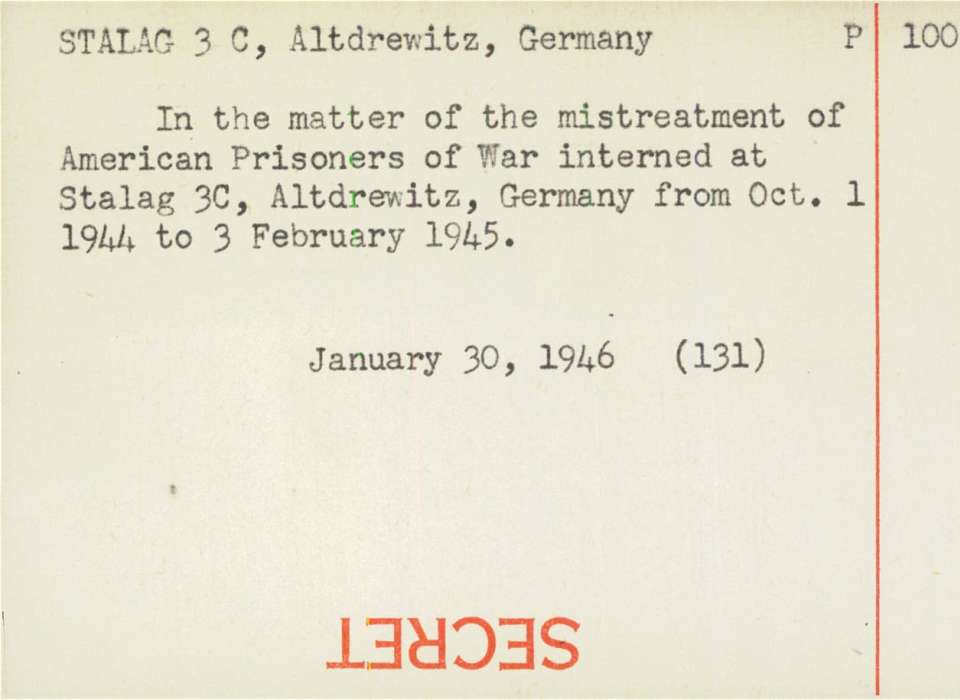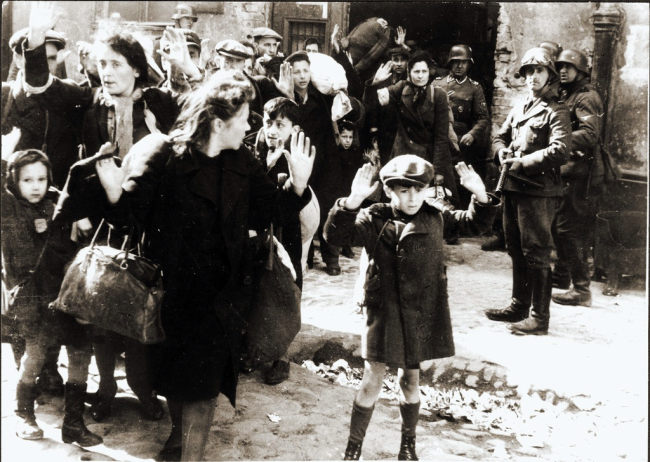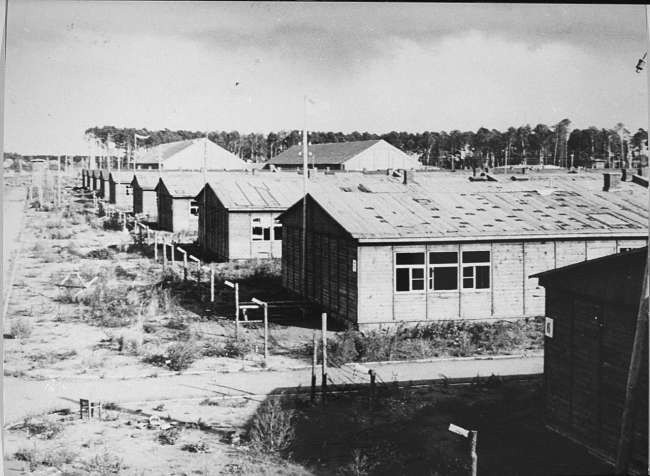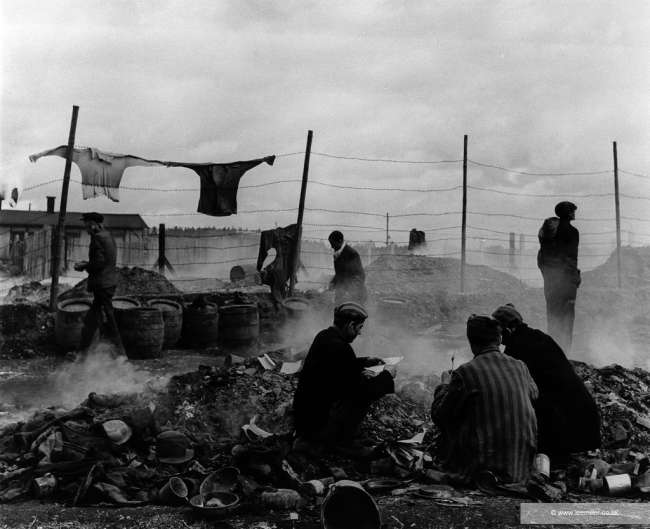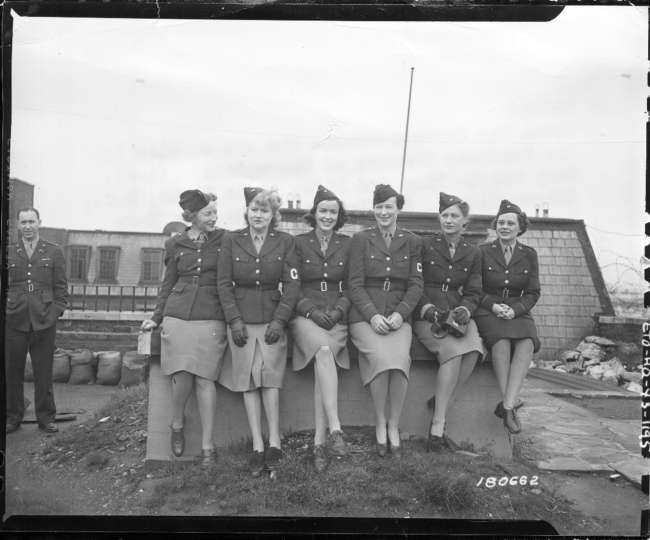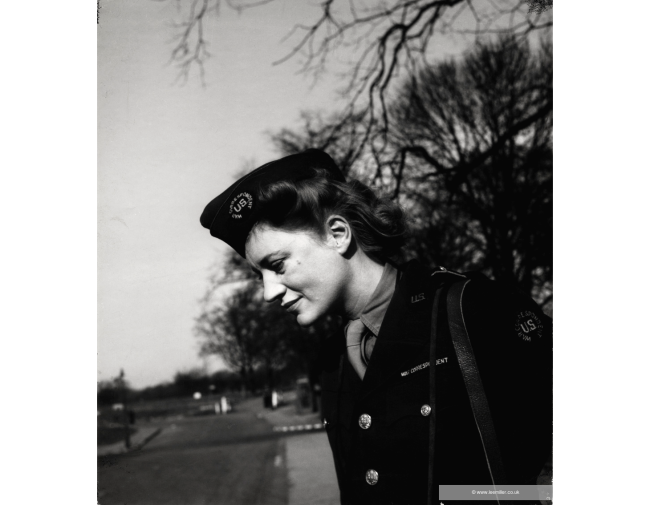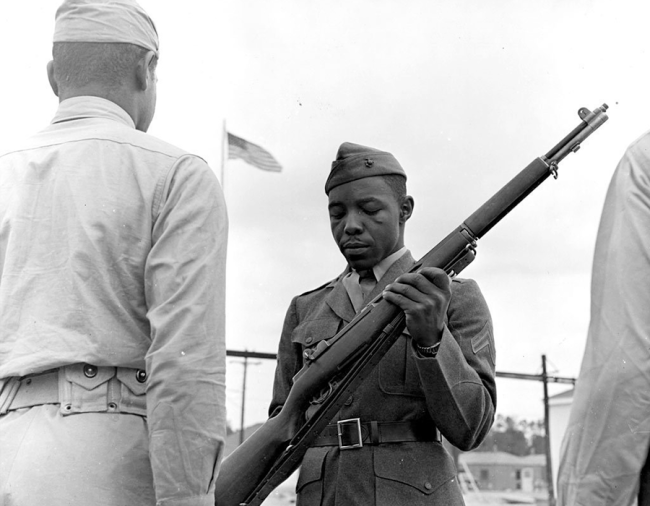It is a terrible truth about the end of World War II in Europe that thousands of men, women, and children perished shortly before or even immediately after their liberation from German captivity. Such was the case of the American prisoners of war from Stalag III-C who fell, tragically, during a firefight between German guards and Soviet troops.
Constructed by Polish prisoners of war, Kriegsgefangenen-Mannschaftstammlager III-C, or Stalag III-C, a German prisoner-of-war camp near the village of Alt Drewitz bei Küstrin and close to the junction of the Oder and Warthe Rivers about 50 miles east of Berlin, had been in operation since June 1940. Thanks to the late Geoff Megargee and his team of researchers at the United States Holocaust Memorial Museum, we know a great deal about the composition of its prisoner population.[1] Behind the camp’s barbed wire and guard towers was a multinational group of men. At various points, the German army confined there prisoners of war from Poland, France, Yugoslavia (primarily from Serbia), the Soviet Union, Italy (after September 1943), as well as British and American inmates. By December 1944, the number of prisoners at Stalag III-C reached over 38,000; over 2,000 were from the United States. Work in labor detachments had been the norm for most of the men.
Stalag III-C: Conditions and Evacuation
Before early 1945, the Germans had generally followed the Geneva Convention in terms of the treatment of American, British, and French prisoners. As was common, they treated the Soviets in the camp quite viciously; as many as 12,000 of them died in Stalag III-C. In 1941–42, Gestapo agents had often pulled out of the ranks of the Soviet POWs professed Communists or those identified as Jews and sent them to the Sachsenhausen concentration camp, where most were executed by the SS.
Conditions greatly worsened for the inmates during the winter of 1944–45. Like in so many of the German armed forces’ prison camps, overcrowding and food shortages came to plague Stalag III-C. At the same time, distance to the front lines to the east steadily dwindled.
On the morning of January 31, 1945, a Wednesday, the personnel manning Stalag III-C decided it was time to evacuate. Delays by the prisoners would no longer be tolerated. Sounds of Soviet artillery fire had become distressingly close for the Germans; for their Allied captives, the shelling signified that the Red Army had finally arrived to liberate them.
Indeed, men of Marshal Georgy Zhukov’s 1st Belorussian Front had drawn near, moving rapidly toward Alt Drewitz bei Küstrin since the launching of the massive Vistula–Oder Offensive on January 12. Soviet forces had swept across Poland, taking Warsaw and Kraków, as well as liberating Auschwitz-Birkenau on January 27. Now they were pouring into German territory, bringing the fighting home, in brutal fashion, to the country that had unleashed World War II in Europe. And Zhukov’s troops had closed in, unwittingly, on one of the many POW camps erected by the Wehrmacht in eastern Germany.
Despite efforts by American prisoners to slow down the evacuation, German guards forced the prisoners to move out of Stalag III-C on the morning of January 31. Later, one survivor recounted how the Germans put them in columns of 500. It was a bitterly cold day to march, five weeks into a winter that was one for the proverbial history books. The POWs and captors would make it only a few miles before catastrophe ensued.
These Americans came from many different units—including the 82nd Airborne Division, the 30th Infantry Division, and the all-Japanese American 442nd Regimental Combat Team. From all their diverse backgrounds and wartime experiences, they had hoped to be freed by the Soviets prior to a long and frigid march westward. What actually happened to them reminds us of the perils of liberation.
American POWs Caught In The Crossfire
Having covered only a short distance, the columns of prisoners soon found their way blocked by tanks: a Soviet spearhead, stunning Germans and prisoners alike by the rapidity of its advance, stood in their path. Thanks to the Red Cross, the POWs wore new uniforms and coats. But these acquisitions unwittingly made them targets. The Soviets, believing they had stumbled across a mass of German soldiers, opened fire on the head of the column. Panic resulted.
Under fire, the Germans could not maintain control over all the men in their charge. Some of the American prisoners headed straight for the Soviets’ position, desperately trying to identify themselves as Americans. Others sought refuge in nearby fields. A third group stayed in German hands.
The incident was a bloodbath. Several of the men who had made it to the fields were cut down, helplessly, in the crossfire. On the next day, the Germans counterattacked with air support, dropping antipersonnel “butterfly bombs” and successfully driving the Soviets back. Some US prisoners taken in by the Soviet unit succumbed to wounds from the German air strikes. Stalag III-C and most of its prisoners stayed for the moment in German control.
Over the next several weeks, the entire surrounding area was totally devastated. The Red Army finally liberated Stalag III-C on March 12, 1945, just over a month before Joseph Stalin launched the offensive to seize Berlin. Some reports indicated the freed inmates completely destroyed the camp structures.
Joseph Beyrle, an American paratrooper from the 101st Airborne Division who had escaped from Stalag III-C, actually fought with a Soviet armored unit. His story, as incredible it is, is really the only connection the US public has to the existence of this POW camp.
Those Americans who managed to join the Red Army force on January 31 and survive underwent their own odyssey. Many of them first went to Poland, then journeyed on to the USSR itself. Via Odessa, the Ukrainian port city, they returned to US control.
After the war, the American Graves Registration Command, or AGRC, investigated what had transpired on January 31 and the days that followed. By then, the area around Stalag III-C was now part of Poland; Küstrin had become Kostrzyn nad Odrą, and Alt Drewitz became Drzewice. Neither the Polish residents nor the officials AGRC personnel interviewed knew much, if anything at all, about Stalag III-C or the incident. The Polish local government denied them access to some grave sites, and reliable information was hard to come by.
AGRC teams did determine that 22 American POWs were killed and almost 50 were wounded in the incident; the actual number might be higher. For decades after the war, several of the deceased remained categorized as “unrecoverable” as their remains could not be located despite prodigious work undertaken by AGRC in the immediate postwar years.
What befell the American prisoners from Stalag III-C in late January and early February of 1945 is illustrative of just how dangerous conditions still were even as Adolf Hitler’s so-called Thousand-Year Reich fell to pieces.
References:
[1] Most of this information about the composition of the prisoner population at Stalag III C is from Alexander Kruglov, “Mannschaftsstammlager (Stalag) III C,” trans. Kathleen Luft, in The United States Holocaust Memorial Museum, Encyclopedia of Camps and Ghettos, Volume IV: Camps and Other Detention Facilities Under the German Armed Forces, eds. Geoff Megargee, Rüdiger Overmans, and Wolfgang Vogt (with Mel Hecker) (Bloomington: Indiana University Press, 2022), 408-410. The remainder of the article draws on the personnel files of several American prisoners held at Stalag III C. Their names have been kept confidential.
Jason Dawsey, PhD
Jason Dawsey, PhD, is ASU WWII Studies Consultant in the Jenny Craig Institute for the Study of War and Democracy.
